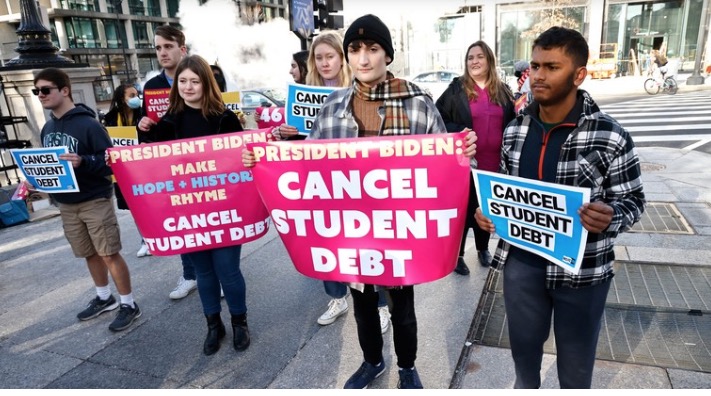CommentsCOST OF EDUCATION - We're told that higher education is one of the best ways to overcome poverty. But for many indebted borrowers, it's been just the opposite.
Since 1980, the cost of college has increased at nearly 9 times the rate of paychecks. If you're poor and don't join the military, land a full scholarship, or gain a mysterious wealthy benefactor, you have one option: borrowing against your future prospects.
That's what I did. My family was poor enough for me to qualify for both Pell grants (federal aid packages awarded to students with "exceptional financial need") and Perkins loans (which were low-interest subsidized loans, unfortunately no longer available). Many semesters, I also took work study jobs.
Even so, I had to borrow $10,000—a lifeline that came with a clear threat.
Before graduating, every senior who'd received financial aid at my university had to pile into a cavernous lecture room, where a financial aid officer put the fear of God into us about what would happen if we ever defaulted on our payments. For hours, we watched slides about fallen credit scores, lost jobs and housing, bankruptcy—all part of the slippery slope from missing a payment to inexorable ruin.
After the presentation, we each had to sign a "master promissory note"—a fancy I.O.U.—and estimate our annual post-graduation income to calculate monthly payments. They made us do this even if we hadn't landed a job yet, or if the job we'd landed paid too little for us to afford a payment.
These fear-mongering tactics made a deep impression—I've skipped meals rather than miss a payment. But even after paying for years, I still have a couple thousand dollars hanging over my head.
And I'm one of the lucky ones.
Millions of American students, especially low-income students of color, end up taking on tens or even hundreds of thousands of dollars in debt. They've had to find a way to make far larger payments than mine with stagnant wages while also covering the rising costs of rent and health care—or while supporting family members.
That's why President Biden's order to cancel student loan debt up to $10,000 for all individual borrowers who earn under $125,000 annually—and up to $20,000 for Pell grant recipients—is such a big deal.
According to the Student Borrower Protection Center, 41 million Americans are eligible for up to $10,000 in debt relief, while 25 million are eligible for up to $20,000. And 20 million of us could have our entire debt canceled, going from negative wealth to positive for the first time in our lives.
That will free up a significant portion of people's paychecks, supercharge our economy, and combat a major source of inequality among hardworking Americans of all ages and backgrounds.
Biden's order will help in other ways, too. It will now forgive future loan balances after 10 years of payments for borrowers with loan balances of $12,000 or less. And as long as they make their monthly payments, borrowers won't see their balances increase—even when that monthly payment is $0 due to low income.
That's huge for people who've struggled for years or even decades under the crushing weight of student debt. It's also the floor of what's needed, not the ceiling.
Canceling all student debt would go further toward unrigging our economy and giving our communities more upward mobility. We also need to crack down on predatory private loans, which can leave borrowers paying down interest for years only to owe more than their original loan amount.
And finally, we need to push for making public higher education free so no one has to purchase their ticket to a better future on credit.
(Olivia Alperstein is the Media Manager at the Institute for Policy Studies. This article was featured in CommonDreams.org.)















